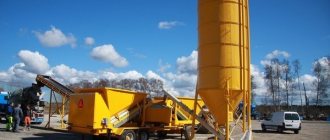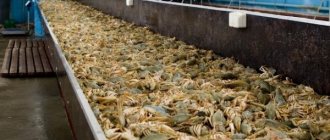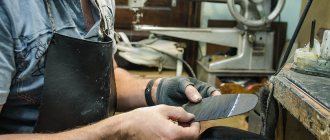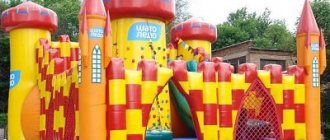Unobvious business features
Plaster products are easy to create. However, it is necessary to have the skill to correctly pour the mixture into the mold. It is necessary to ensure that air bubbles do not form, which turn into holes when the gypsum hardens. Many of these figures end up being scrapped, which entails waste of material.
To create plaster products you need to learn how to make molds correctly. This point can be called key, since the quality of the product itself almost 99.9% depends on the quality of the form. The production of molds, as already mentioned, is the most labor-intensive and harmful to health. Here it is necessary to take care not only of ventilation, but also of personal protective equipment. You need to work with a mask or respirator, and rubber gloves are required on your hands.
As for the choice of assortment, it is better to focus on decorative elements for decorating building facades and interiors. However, you can make money boxes and souvenirs. However, you should not make this product your main product. Various figurines sell well solely because of their low cost. This is the attractiveness of gypsum products. But this material is fragile, and therefore the demand for such products cannot be called stable.
The process of making decorative elements, compared to souvenirs, is in many ways even simpler. It is more profitable to sell such products, since the fragility of gypsum plays a secondary role here.
The production, transportation and installation of products must be carried out by employees of the enterprise, since when working closely with the material, they begin to feel it and cases of damage to products become a rare occurrence.
Features of choosing material for the production of garden decorations
Figures for the garden can be cast from plaster, concrete and polystone. Products made from gypsum sell out faster. They have the lowest price. Therefore, organizing the production of such products is a very simple process that does not require large material investments. A kilogram of gypsum costs from 40 rubles. It produces very fragile products that are not resistant to any mechanical loads. They absorb moisture. The service life of such a garden decoration is one season, but consumer demand for such products is still quite high, so you can safely work in the designated direction.
Garden figurines made of plaster Source svarka-doka.ru
Step-by-step instructions for starting a business
To organize a business, an entrepreneur must complete several steps:
- Register an individual entrepreneurship (IP). It is also advisable to write an application to apply the simplified taxation system.
- Find and rent a work space that meets the necessary standards.
- Purchase equipment.
- Hire staff.
- Purchase raw materials and consumables.
- Develop a company logo.
- Launch an advertising campaign.
- Find customers.
- Start a business.
Which OKVED to choose when registering?
23.69 – production of products from gypsum, cement, concrete mixture.
What documents are needed to do business?
To conduct a legal business, you will need to register with the tax office. It will be enough to register as an individual entrepreneur. To do this, you must present to the tax office at your place of registration:
- Statement;
- Photocopy of passport and birth certificate;
- Receipt for payment of the duty.
Which tax system to choose when producing garden figures
When making garden figures, it is advisable to choose a simplified taxation system - 6% of the income received.
Do you need business permits?
A license or additional permits are not required for the manufacture of garden figures.
Franchising
If you doubt the success of the business due to the lack of any experience in the field of production, but at the same time you have start-up capital, you can open a franchise business. Even though it will be a little more expensive than opening an independent business, the chance of building a successful business increases. Many questions that an entrepreneur will certainly have at the start of a project are resolved by the franchisee.
The franchise package, as a rule, includes: a complete set of equipment for the production of garden figures, a detailed description of the production technology, a ready-made business plan, molds for casting figures, a set of raw materials for production, organization of personnel training, assistance in arranging the production premises. This is enough to open a full-fledged production with a payback period of 1 to 2 years. E
The only disadvantage, as noted above, is the cost of the franchise. The initial payment alone will be at least 900 thousand rubles. The total investment under the franchising scheme will be about 3.5 million rubles.
Possible market
Garden sculpture, as an element of garden plot design, has been known for a long time. But in our country it came into wide use relatively recently. The range of garden figures is very large, from artistic sculptures to the simplest totem signs or abstract compositions made from natural materials. For a novice entrepreneur, figures of interest are those whose manufacturing technology is characterized by comparative simplicity and low cost. The range of potential consumers of such products is very wide; these include, first of all, owners of houses and cottages who are concerned about beautifying their plots, but are not inclined to overpay expensive design firms for this. Also worth mentioning are residents of high-rise buildings and managers of enterprises and offices, who often strive to decorate the surrounding area with garden sculptures. Thus, we can say that the production of garden figures can count on stable sales in suburban cottage villages and private development areas of large cities. The diversity of garden sculpture is facilitated by the need to fit it into the surrounding landscape, and this should be done regardless of the size of the plot or the cost of the figure.
Therefore, for an entrepreneur who makes garden figures with his own hands, it would be wise not to limit himself to their production. If he is not confident in his abilities in terms of landscape design, then he can use the services of a specialist who will help him install the garden sculpture in the best way so that it is in harmony with the rest of the landscape elements. A well-placed figure not only enhances the positive impression of the customer, but also serves as a permanent advertisement for the company that manufactured it. At the same time, we should not forget about traditional forms of advertising, such as advertisements in paper publications and information sites on the Internet.
Sales Features
In addition to product quality, its cost and advertising, sales are directly influenced by the presence of competitors. This issue should be taken seriously, since it may turn out that campaigns of a similar profile are already operating in the region, which with their products completely cover the demand for it. In this case, successful entry into the market will require resources that most likely exceed the capabilities of a novice entrepreneur. At the same time, the production of garden figures can be successful even in the presence of strong competitors. An entrepreneur can count on this, who will be able to organize the production of a wide range of figures and improve their artistic quality. This is due to the technological features of this type of activity. Since making molds for casting from gypsum, concrete and artificial stone requires serious professional skills, in most cases manufacturers prefer to buy ready-made molds. This does not contribute to product diversity, which is usually limited to a few models. At the same time, their artistic level leaves much to be desired, which is easy to see by remembering the figurines of gnomes and other fairy-tale characters standing at the entrances to shops or on personal plots. Therefore, the entrepreneur who manages to organize the production of molds on his own and attracts a good artist to this business automatically gets a head start over other manufacturers.
How to sell gypsum products
How to organize sales of finished products for a beginning businessman?
There are many ways to sell your gypsum products using:
- post photos of products and advertisements on stands or on social networks;
- enter into an agreement with a network of construction stores;
- take individual orders.
If the business is only at the initial stage, it is recommended to make small-sized plaster products in the form of various garden figurines, busts, and figurines. When you have already acquired some experience in this craft, then you can set your sights on larger-scale works in the form of columns, statues, and so on.
In our age of all kinds of innovative technologies, gypsum products remain as popular as in past centuries. Working with this material guarantees the embodiment of original ideas, the development of creative abilities, and the enjoyment of what was conceived and implemented.
If it's a hobby, you can always turn it into a business and earn extra income.
That’s probably all, for those who are also interested in business ideas, we have made a selection of the latest business ideas, and of course, don’t forget to subscribe to our VK group to stay up to date with the most current ideas for starting your business.
The circumstances that lead to the idea of starting your own business and being independent from the employer are different for each person.
But if you decide to start your own business, the question is where to start. And the first step to start your own business is to decide on a business idea.
The main thing is that you like what you are going to do, and the simplest solution would be to turn your hobby into a business.
For example, if you know how to cook confectionery or pies well, then you can make products to order by contacting specialized agencies for organizing celebrations or selling your products directly on the market. Or if you are good at cars, you can start a car repair business.
But if you want to organize a successful business in a broader sense, then you need to find a business idea that is different from others. It doesn’t have to be completely new or unusual.
Casting a figurine from plaster
Today, garden figurines are already very popular. Thanks to such decorative elements, the area is completely transformed. These could be, for example, figurines of fairy-tale gnomes who guard your peace. In addition, you can place several fairy-tale characters, such as birds that perched on the lawn, caterpillars and frogs, beautifully located on your pond. If you wish, you can create a real fairy-tale plot that will transform your garden plot. A variant of this decor is shown in the photo.
Plaster sculptures for the garden
Choosing figures for the garden
Any sculpture, figure or composition must be harmoniously combined with the landscape and style of your garden. Here are some basic recommendations that will help you figure out the right place and type of garden decorative composition:
Drawing a plan
Sometimes we see an expensive, beautiful thing, we save up money for a long time to buy it, however, when the time comes to try it on before purchasing, it turns out that this thing, in principle, does not suit us. This happens with figures for a personal plot. Therefore, before you purchase a decorative figurine for your dacha, you need to draw a plan diagram of the site with the location of future decorative elements.
Garden decor with plaster sculpture
Choosing a background
Another important point is a well-chosen background and its combination with the figures. It is better for small sculptures to be located in prominent open places on the site. Garden figurines look great against the background of decorative fences, flower beds, near paths, as well as front gardens. Large-sized white or bronze garden sculptures go well with the greenery of large trees, stone fountains and trimmed bushes. You can see the result in the photo below.
We select garden sculptures based on his style
An important point is to maintain consistency between the style of the garden and the figures in it. In a romantic garden with planted roses and arbors, monochromatic sculptures depicting people, flowers, or beautiful compositions with thin lines look great. A rustic-style plot can be complemented with wooden figures, figurines of domestic animals and various national items. The “modern” style can withstand any expressive compositions made of marble, metal, clay and even concrete.
Garden figures need to be selected appropriately for the location
Incompetent combination of sculptures with a garden plot can ruin the appearance of even the most neat landscape design. Thus, ceramic fly agaric mushrooms will look ridiculous near a textured marble fountain, a Chinese dragon is unlikely to complement a wicker fabric, and the figure of Apollo will not turn out to be a beautiful decor for the front garden of a kindergarten.
We breed plaster
When the location, style and background for the figures in your garden plot are chosen correctly, you should have a feeling of excellent design and comfort.
Making garden figures from plaster
As you know, gypsum is used to make crafts with your own hands, including when creating garden sculptures. This material is very popular because it makes it possible to give shapes any shape. However, remember that a plaster figurine is very fragile; being near such decor, do not damage it.
In a process such as making plaster angels, special molds are used. Although you can make a figurine without them. For example, the simplest products are caterpillars. To do this, we can make a dozen flattened circles, it is better if they are of different diameters, and combine one with the other. The caterpillar's head needs to be made round. We place 2 small balls on top of it like eyes, which must then be decorated. The most optimal material for creating your own garden figurines is plaster. It is quite stable. The figures will withstand high humidity and water well, be it rain or snow, heat or cold.
Creating the basis for the sculpture
However, it is also necessary to remember that this is a fragile material, and figurines made from it should not be dropped. Let's find out how to make a garden figurine from plaster with your own hands:
- The most important thing in this work is gypsum, which can be bought at any hardware store. After purchasing, do not throw away the instructions, because you will need them to correctly follow all proportions when mixing the solution.
- To dilute gypsum you need dishes. In this case, it is better to use plastic dishes.
- Add PVA glue to the already diluted plaster according to the proportion. You need to proceed from the calculation - 1% of the adhesive composition of the total volume of the mixture.
- You can cast a small figurine into a mold without having to cast the base. Silicone molds are very convenient. They are easier to purchase, although you can do it yourself if you are not afraid of the labor-intensive process. But remember that making a mold with your own hands only makes sense when you need two identical figures.
Plaster angel figurine
- But to make a large sculpture with your own hands with legs, arms, and a tail, you need a reinforced frame. To do this, we cut the reinforcement into pieces and combine them into a frame. It should repeat the skeleton of future products. Near the base of the sculpture we make protruding parts that will serve to attach the pieces.
- At this stage, fill in the gypsum solution. First you need to fill the material up to half of the mold. Then you need to shake it vigorously by knocking on the walls. Look at the situation - you will probably have to do this for a very long time. Make sure that all the air comes out of the solution. Because if it remains, then the bubbles will turn out to be holes. But they quite spoil the appearance of the finished plaster sculpture, and also reduce its strength.
- Then you need to add plaster. Be sure to repeat shaking and tapping. When all the air has gone, leave the gypsum solution for a while until it hardens.
- Then we level the surface with a spatula and leave the future figure to dry. To find out how long you need to leave your own garden figurine, carefully study the instructions on the package.
Painting the figurine
- When the plaster dries, take out the figurine. To do this, cover the mold with a lid, a board, and press carefully. Then we carefully turn and deliver the product.
- At this stage comes the most interesting part - you can paint the figurine to your taste. To do this you need to make acrylic paint. Also, gouache will work well on plaster, but this material is not suitable for garden figures, as it is afraid of moisture.
- Before painting, it is definitely recommended to coat the product using primer. For this composition we take PVA glue.
- You can decorate crafts using colored mosaics with your own hands, which can be made from fragments of colored glass and ceramic tiles. A garden sculpture, decorated to your taste, will radiate (literally) radiance and shine, as well as warmth. The household and all your guests cannot help but like it.
Let's look at an example of making an angel from plaster. We take a rubber head from an old doll. It is cast in plaster. We cut off the tops of an old rubber ball and fill it with starting plaster and insert the head, which was already attached to a thick wire. We leave everything to harden.
Next, we move on to preparing hands from wire. Then we make wings from small pieces of mesh. At this stage, we apply the starting plaster, while helping ourselves to smooth everything out with a wet brush. Now let the plaster harden a little and again apply a new layer, creating a figure. Now we need to finish the head. We wait until it hardens and dries thoroughly. At the end, you need to sand it with sandpaper, apply PVA glue and water-based emulsion and coat it with clear varnish. At this stage our figure is ready.
Author: S. Diana
What are garden sculptures made of?
Figures that are pleasing to the eye are made from natural and artificially created materials. If the garden owner decides to create a sculpture himself, then he makes the choice in favor of one or another raw material based on its availability and properties. When purchasing a finished product, they focus on the latter and the cost. So, this is what garden figurines are made from in most cases.
Gypsum
Stucco molding made from this material is most in demand. Gypsum is loved for the following qualities:
- Environmental friendliness
. Live raw materials are absolutely safe. You can even sculpt with it next to a baby;
- Compliance
. It takes any, even the most complex form. The end result can be easily sanded with sandpaper or a nail file;
- Hygroscopicity
. Gypsum sculptures absorb water vapor when it is humid and release it in excessively dry air;
- Strength
. Gypsum products are not afraid of rain, time, or heat. This is confirmed by statues that have been preserved, for example, from the times of the Renaissance or classicism.
- Fire resistance
. Figures made from this raw material do not burn and do not support combustion.
Concrete
You can independently build a vase, ball or mushroom from artificial stone based on cement, sand and acrylic. To implement complex ideas, it is better to call landscape designers. Concrete is valued for the following qualities:
- Resistance to any weather
. This quality is necessary for being outdoors.
- Plastic
. Working with concrete is many times easier than working with stone.
- Heavy weight
. Stealing a concrete statue from a garden is difficult, and this guarantees its safety.
- Durability
. A figure made from this material can be considered a family heirloom, because it will decorate the garden for many decades.
Tree
To create garden sculptures, experts recommend the use of pine, oak, beech and aspen. Here are the advantages of wooden structures:
- Naturalness
. Wood sculptures are environmentally friendly and radiate positive energy;
- Realistic appearance
. Living sculptures fit organically into the ensemble of flowers, shrubs and trees;
- The ability to create masterpieces
. Openwork carving and decoration of the smallest details by the hands of masters transform the figures into unique works of art.
The disadvantages of these products are the fragility and high cost of both the material and the work on it.
Garden fly agarics and milk mushrooms
A great way to try your hand at sculpting plaster sculptures is to take a master class on creating crafts from plaster. This activity will be a rewarding opportunity for kids to decorate their yard with homemade decorations.
To make garden mushrooms you will need:
Gypsum mixture.- Plastic bottle.
- Wire.
- Plate.
- Transparencies.
- Acrylic paints.
- Finishing varnish.
In order not to complete the creation of mushrooms with lengthy cleaning, prepare the work surface before starting the process. The table can be covered with newspaper or oilcloth. When working with children, it is important to choose an outfit that you won’t mind ruining. Washing plaster is very difficult, and sometimes almost impossible.
Features of the material
You can make various crafts from plaster - from original decorations for the garden to children's toys. These can be decorative flowerpots, figurines, plaster figures of animals or fairy-tale characters. It should be noted that you need to work with gypsum very quickly, the hardening time is from 7 to 20 minutes, re-dissolution is not allowed.
There are many nuances when creating plaster figures
The technology for creating decor from gypsum is very simple: you just need to prepare the mixture, pour it into a specially prepared mold, let the resulting product dry and paint it in the desired color. The biggest difficulty is finding a suitable mold for casting. The disadvantages of such products include the fact that the paint on them does not last long due to the influence of weather conditions, as well as their fragility and fragility.
This is due to the fact that when gypsum hardens, it becomes brittle and porous, and at any moment the product can crack or break. The advantages of gypsum include its very low cost and unlimited opportunities to create a variety of gypsum decorative items with your own hands.
Varieties
There are a huge number of varieties of gypsum. The following are suitable for creating garden sculpture:
- Sculptural gypsum is the finest-grained and durable gypsum. Suitable for creating large volumetric figures.
- Acrylic plaster is made from acrylic resin. It is lighter than sculptural plaster, and when marble chips or aluminum powder are added, it resembles natural marble.
- The polymer composition is used in the independent production of gypsum molds.
Methods for making plaster sculptures
If you are not a professional sculptor, it makes sense to start working with plaster by making sculptures using the molding method. This technology involves obtaining finished products by pouring gypsum mortar into molds. Molding is a very simple way to create sculptures, which is suitable even for children's creativity. For children under 12 years of age, creative activities must be conducted by an adult. An alternative way to make a sculpture from plaster is to model the desired figure from diluted plaster on a frame. It is convenient to use a variety of spatulas and other tools in the work. What sculptures can you make from plaster with your own hands? The frozen material is quite porous and fragile. But despite this, it can be used to make outdoor sculpture. Plaster is ideal for creating interior elements and decorative figures. If you are just starting to work with this material, try doing something small and simple in shape for the first time. Gradually improving your skills, you will learn to create real masterpieces from plaster.
Popular forms
The right mold for making figures is the sure key to success. Speaking of poured figures, the first place in terms of practicality and convenience is occupied by silicone molds or molds, the main advantage of which is the easy separation of the poured product from the mold itself. This is more relevant when working with gypsum mortar. Also, in some cases, it is necessary to use special drying chambers, if we are talking about large-scale figures.
But in most cases, it is improvised means that are used as molds for pouring the future product. Let's take, for example, the simplest and most popular plaster figure - a mushroom. You can use a cut plastic bottle as a stem, and an ordinary small bowl or plate to fill the cap.
Stencils are used to make flat figures.
Preparing a mold for making a plaster figurine
Now let’s learn more about how to make a craft mold yourself. The easiest way is to use available material.
- If you make a small hole in an old rubber ball and pour plaster into it, you get a form that can be used as a separate sculpture or a part for a more complex design.
- The ball halves can be used as the basis for the ladybug.
Resourceful craftsmen use improvised materials as forms - bowls, construction helmets and other similar forms.
- Plastic bottles are very popular as a “matrix”.
- One of the sculptural bases is a balloon. Its surface is filled with gypsum, and after complete hardening it is removed, after releasing the air. In this case, it is better to use plaster bandages.
In the garden they look like real ones, only big.
Room
To organize a business in the production of garden figures, a number of conditions will be required.
- Premises with an area of 100 sq.m. A huge advantage will be the presence of territory near the premises. Of course, you can start at home, but if we are talking about a serious approach, then it is better to look for rental options.
- Distance from residential buildings. If a vibration table is used, it will create noise, which neighbors may eventually complain about.
- Segmentation of the work area: production workshop, painting room and warehouse for drying finished garden figures.
- Availability of high-quality ventilation, electrical line.
Some finished sculptures can be stored outdoors under cover. There you can also organize a point for selling products.
Video description
The video shows how you can make a figurine from plaster by pouring the mixture into a silicone mold:
The described choice has one significant drawback. The production of garden figures from polystone is impossible without the use of synthetic pigments and polyester resins. They contain styrene, a dangerous chemical compound. Therefore, those who choose such technology for the production of garden figurines will need to be more careful about the organization of the labor process. For its implementation, only those premises that are located five hundred meters from residential buildings are suitable; good ventilation must be installed inside, workers must wear respirators and other protective equipment.
Polystone figures with a lot of small details Source vsegdasvami.ru
Important ! There are no local raw materials on the domestic market. It has to be imported from abroad, so the cost of polystone figurines is very high.
Concrete garden figurines are also in good demand among buyers. They are manufactured using components that are quite affordable. These are sand, cement, pigments and plasticizers. All dry ingredients are mixed into the solution using water, and the solution is poured into special molds. After hardening, the result is very durable products that can last in the garden for decades. They have one significant drawback - heavy weight. It will be difficult to move the figurine from place to place if desired. Often, special equipment must be used to transport and install such sculptures.
Concrete watchdog figurine Source compras.sharemedoc.com
Equipment
List of basic equipment for work.
- vibrating table With its help, uniform distribution of the composition in the mold will be achieved.
- air compressor. For spray gun operation.
- spray gun or airbrush with various attachments.
- forms (matrices).
- hand tools: screwdrivers, spatulas, for removing molds.
- grinding materials.
Consumables will take the lion's share of the budget.
- gypsum, concrete, or polystone.
- paint or special pigments.
- varnish
Staff
You will regulate the number of employees based on the needs and plans of the company. But at the initial stage, you still can’t get by with several positions.
- Head of the workshop. The duties of this employee typically include managing the production process. As well as control of material supplies and search for orders. (In the future, managers can search for orders and ways of implementation, but in the beginning it is worth saving on this). By the way, you, as the owner or manager of the business, can perform the functions of a workshop manager when starting an enterprise.
- Foundry workers. Initially, the staff will handle this position by two people. Moreover, this work is not difficult and does not belong to the category of harmful. Therefore, a woman can also work in this position. The work is monotonous, but the skill is acquired quickly. And the result, as usual, can be assessed immediately. Hence the piecework nature of payment. For quantity and quality.
- Molders. You will also need two people. The main functions of the molder are preparing the polyurethane mixture, assembling structures for attaching models, and molding itself. And subsequent processing of the product (polishing and grinding of parts).
– Installers. Implies great responsibility. Since at this stage the finished product is assembled for the customer. The work of a professional in this position is paid more than others. And if it is not possible to hire two people with already good experience at once, then there should be at least one master in the team. Otherwise, you risk getting a very high percentage of defective products, and, as a result, you will lose many clients, and with them your reputation, which is critical at the initial stage.
Organizational matters
To form a business, an entrepreneur registers as an individual entrepreneur and chooses a simplified form of taxation.
Any room with an area of 30-50 square meters is suitable for a production workshop. meters with an uninterrupted water supply, connected electricity and the ability to maintain the temperature at +20...+25 degrees. Depending on the chosen technology for the production of gypsum products, the workshop is equipped with tables, a compressor machine, and hand tools (brushes, spatulas, hammers). To work in the workshop you will need a foundry worker and a painter. To obtain figures that are interesting in design and of good quality, the entrepreneur must take care of the supply of casting molds (molds, matrices) made of elastic material. It is also necessary to equip a drying shop, purchase packaging material, and transport for delivering the figures.
To attract customers, it is necessary that the range of produced figures be as wide as possible. At the initial stage, 15-20 casting molds are purchased. The cost of one is from 600 rubles and above.
Technological process
The technology for making garden figures is a fairly simple process that does not require special knowledge and skills. The production highlights are as follows:
- preparing the mixture according to the selected recipe;
- pouring the solution into molds (special forms);
- removing the workpiece after it hardens;
- decorating the sculpture: priming, painting, etc.
As a result, with a minimum of effort and expense, you get an original product that will look natural on any garden plot.
Nuances during manufacturing
The production area must be equipped with a ventilation system, and workers must be provided with personal protective equipment such as respirators and gloves. The minimum list of necessary equipment for casting acrylic stone consists of the following items:
- Vibrating table
- Vacuum compressor.
An airbrush, that is, a device for spraying paint, which, unlike a simple spray gun, also allows you to draw lines and work with several colors. The approximate cost of this equipment is 75,000 rubles. The main expense item is consumables. Moreover, you should not save on them, since if low-quality raw materials are used, figures made from them can pose a direct threat to human health. In addition, you will have to spend money on purchasing or manufacturing matrices. At the initial stage of organizing production, you can get by with several models in order to acquire new ones as the business develops. To work out the small details of finished figures, the same techniques are used as for stone carving, while polystone is much easier to process than natural stone. The production of garden figures from plasticized concrete is technologically not much different from their production from polystone. It also occurs by vibration casting using plasticizing additives, hardeners and pigments. At the same time, consumables are relatively inexpensive. Making figures from wood requires professional skill and artistic inclination, so it is usually done individually.
Figure manufacturing technology
To work you need plaster, water and blanks of clay or wax figures. A mass similar to sour cream is prepared from gypsum and water. The workpiece is coated with it and allowed to dry a little. Then apply another layer and dry thoroughly. There are two ways to remove the finished form:
- If the workpiece is made of wax, then it is melted by heating the figurine and poured through the hole left in advance.
- The clay blank is cut in half with a sharp knife. The mold halves are cleaned of clay and glued together, sealing the joints with a gypsum solution.
Garden forms can be filled with gypsum or cement mortar. In this case, the figures will be more durable. The most commonly used solution is gypsum. You can prepare it as follows:
- a little sulfuric acid is added to the water - it acts as a fixative for the future figure;
- the resulting solution is poured into plaster;
- mix;
- the mixture is poured inside the mold.
To ensure uniform spreading of the solution along the walls, it is advisable to rotate the mold. Allow at least a day for the solution to harden. After this, the halves of the mold are split, and the finished figure is removed from the plaster.
Finally, the figures are coated with varnish or paint. In this form, the products are ready for sale.
Making figures from polystone
Modern figures are increasingly being made from polystone and plastic concrete, and plaster is becoming a thing of the past. The main materials for creating such concrete are acrylic resin, aluminum additives, and coloring agents. This material is distinguished by its strength and density of structure. Garden figures made of plastic concrete are more resistant to moisture, rotting processes, and temperature changes.
The process of making garden figures from polystone, as well as from gypsum, consists of pouring a solution into the matrix. In the first case, acrylic resin is used. To make the fill harden better, special substances are added to it. They speed up this process, and the required density of the structure is achieved using a vibrating table.
One of the advantages of polystone is the ability to give the casting a wide range of colors thanks to the addition of coloring substances. When working with polystone, you must follow the rules, since the substances of this material are toxic. Despite this, polystone figures are not hazardous to health if the technology is done correctly and good components are purchased. As a precaution, when making figures from elastic concrete, you should wear gloves and a respirator. Work can begin with just two tools: a vibrating table and a vacuum processor. You will also need equipment for applying paint.
How to restore plaster garden figures
Gypsum or alabaster are not strong enough materials; when impacted, from humidity and frost, they easily crack and lose color. In such cases, you can carry out the restoration yourself:
- Small chips can be eliminated by applying gypsum putty to the damaged area. After drying, this part is painted, varnished and decorated in the same way as the entire figure. You can repaint the entire craft;
- When the figure is broken in half, it is easy to glue it back together. If additional pieces were broken off, they are first fixed with waterproof glue, and then the halves of the figurine are fastened together. The joint is coated with putty, tinted, and varnished;
- Scratches on the figurine are removed with putty. After it has dried, the surface is re-tinted and varnished;
- The cracked varnish is carefully peeled off with fine sandpaper and a new layer is applied with a brush.
Multi-colored snails will easily complement a Japanese bonsai or flower bed
Financial part
The business idea does not involve large financial costs at the first stage. You can start work on your own, use your own garage as a production facility, and hire workers after a little promotion of the enterprise. An entrepreneur who has chosen the technology of making sculptures from polystone will need to buy:
- molds (at least 15 pieces) – from 4250 rub. (for 50 cm mold);
- paints and varnishes - from 6,000 rubles;
- other (brushes, spatula) - about 2500 rubles.
The investment amount (without drying cabinets) will be about 13,000 rubles. If you add the price of raw materials, the cost of the product will vary from 350 rubles. and higher. The average selling price for one figure will be 1000 – 1200 rubles. That is, one figurine will bring the master up to 800 rubles. arrived.
Business can be developed by attracting artists and sculptors who will create exclusive figures, the cost of which will be significantly higher than the average market price of the products. Glow-in-the-dark sculptures can be a great attraction for buyers. And if we add to this cooperation with companies involved in landscape design, a staff of qualified employees, the services of a professional designer, etc., then the company will begin to produce a completely unique product that is in great demand among the population.
Efficiency mark
The project for the production and sale of garden figures from gypsum can be called investment attractive, which is confirmed by the integral performance indicators presented in Table. 1. It is expected that the project will reach payback and begin to make a profit by the 5th month of operation. The effectiveness of the chosen direction is evidenced by the net present value (NPV), which in our case is positive (260,758), the profitability index (PI), exceeding 1 (1.14), as well as the internal rate of return (IRR), which is greater discount rates (25.83>15).
Risks and disadvantages of business
The main disadvantage is that the company will be profitable only with a large number of orders. Another problem is finding clients. A novice entrepreneur will have to invest a fairly large amount of money on an advertising campaign to attract a large number of customers. However, in case of failure, all purchased equipment can be re-sold, thereby returning a small part of the starting capital. When producing plaster figures, there is also seasonality, because not all products will sell equally well at one time or another of the year.
Ready-made form or homemade?
To make plaster sculptures, you can use ready-made molds. They are sold in craft stores. An interesting idea is to use culinary molds, for example for ice, cupcakes or candy. In joint creativity with children, you can use sand molds for casting plaster. If you couldn’t find anything interesting, try making a mold yourself. Simple sculptures (for example, interior columns or large mushrooms for garden decoration) can be made using household tools. For example, a mushroom cap can be cast in a basin or bowl of a suitable size, and a stem can be cast in a cut-off plastic bottle. Casting molds can be removed from any existing figures and figurines. Cover the selected product with cling film. Then cover it with clay or plasticine. Wait for the material to harden, then carefully cut the mold and pull out the figure hidden inside. Your homemade mold is ready, now you can make sculptures from plaster.
Bottom line
The production of plaster figures is a good business idea, the advantages of which outweigh the disadvantages. If you approach the matter responsibly, then in a relatively short period of time the enterprise will consistently generate income. The amount of start-up capital is not so large as to drive a novice entrepreneur into credit bondage. The business has enormous potential to create a large enterprise.
Sources
- https://realybiz.ru/idei/biznes-ideya-izgotovleniya-sadovyx-skulptur
- https://vipidei.com/proizvodstvo/izdeliya-iz-gipsa/
- https://Zapusti.biz/biznes-idei/proizvodstvo-figur-iz-gipsa-na-zakaz
- https://abcbiznes.ru/biznes-idei/421-malyy-biznes-proizvodstvo-sadovyh-figur.html
- https://bisnesideya.ru/nestandartny-e-idei-biznesa/sadovye-figury-svoimi-rukami.html
- https://busideasto.ru/biznes-idei/biznes-ideya-izgotovlenie-izdelij-iz-gipsa.html
- https://m-strana.ru/articles/figurki-iz-gipsa/
- https://besedka.guru/dekor/figurki-iz-gipsa-dlya-sada-svoimi-rukami.html
- https://stroy-podskazka.ru/landshaftnyj-dizajn/elementy/izgotovlenie-sadovyh-figur/
- https://biznes-club.com/biznes-idei/proizvodstvo-i-prodaja-sadovih-figur.html
- https://businessmens.ru/article/biznes-ideya-kak-otkryt-proizvodstvo-izdeliy-iz-gipsa
- https://namillion.com/proizvodstvo-sadovyx-figur.html
- https://MrDachnik.com/podelki-iz-gipsa
- https://dacha.help/sadovyiy-dekor/podelki-iz-gipsa-dlya-sada-i-ogoroda-svoimi-rukami
- https://www.openbusiness.ru/biz/business/biznes-plan-proizvodstva-i-prodazhi-sadovykh-figur-iz-gipsa/
[collapse]











